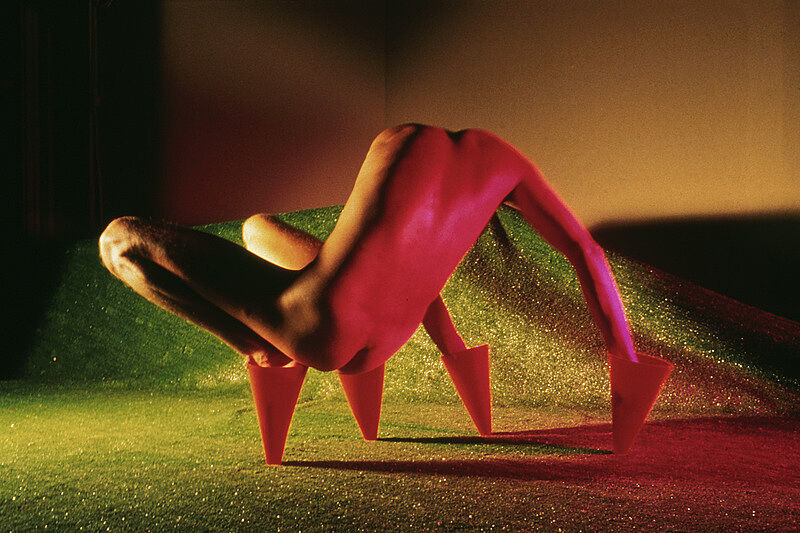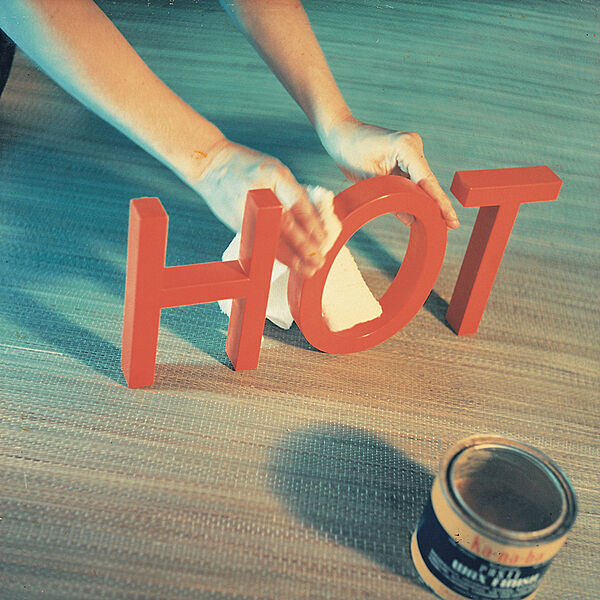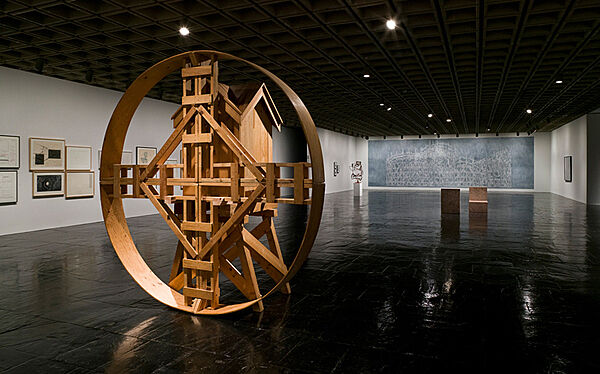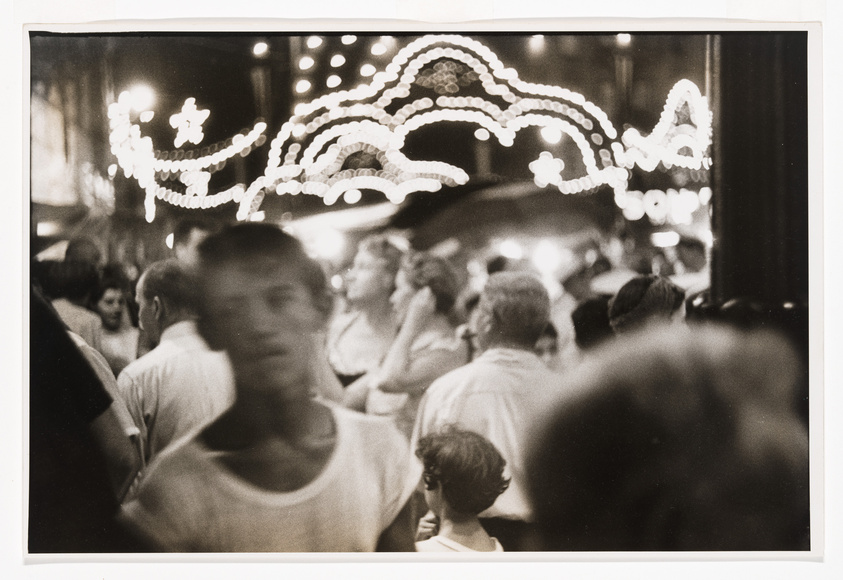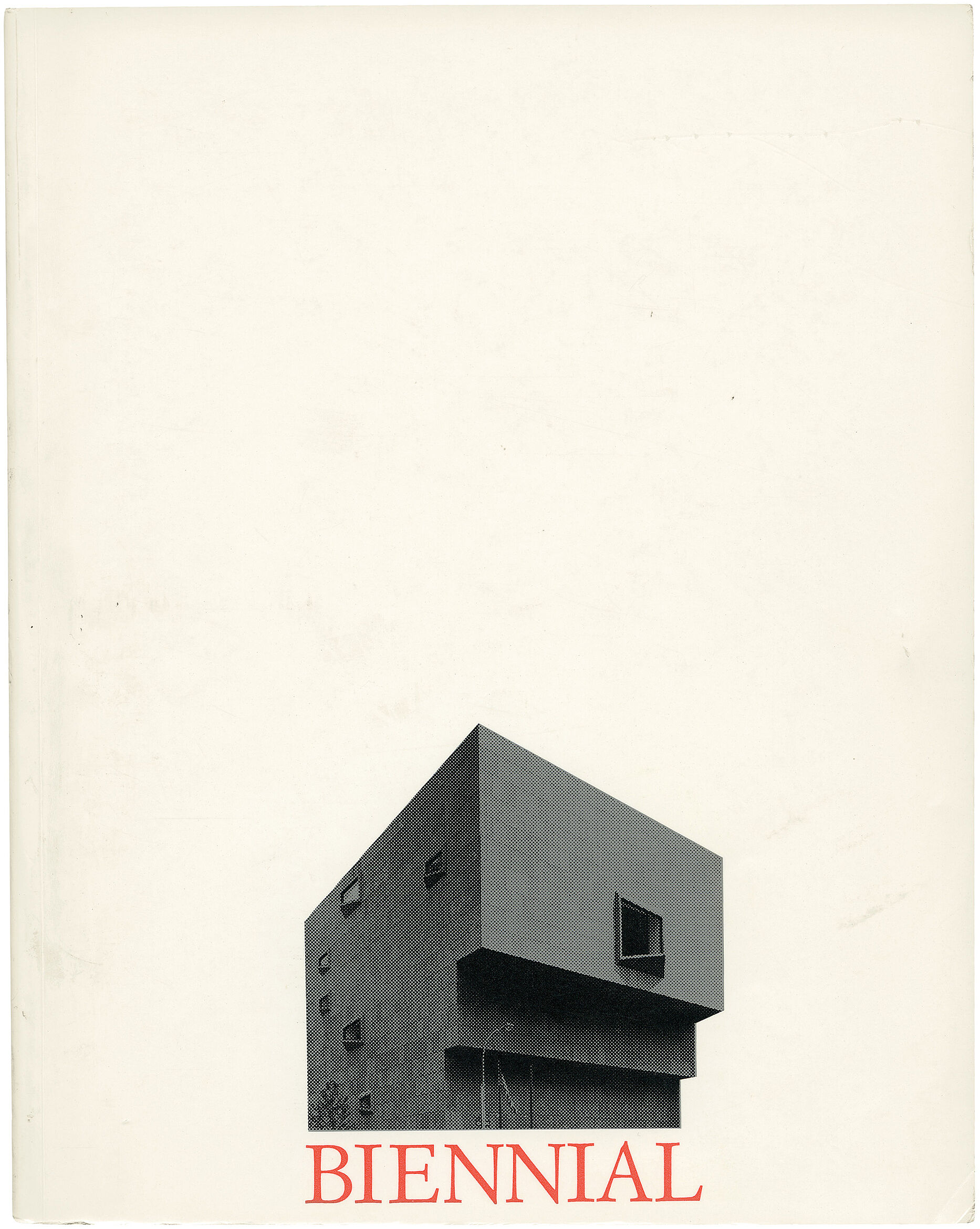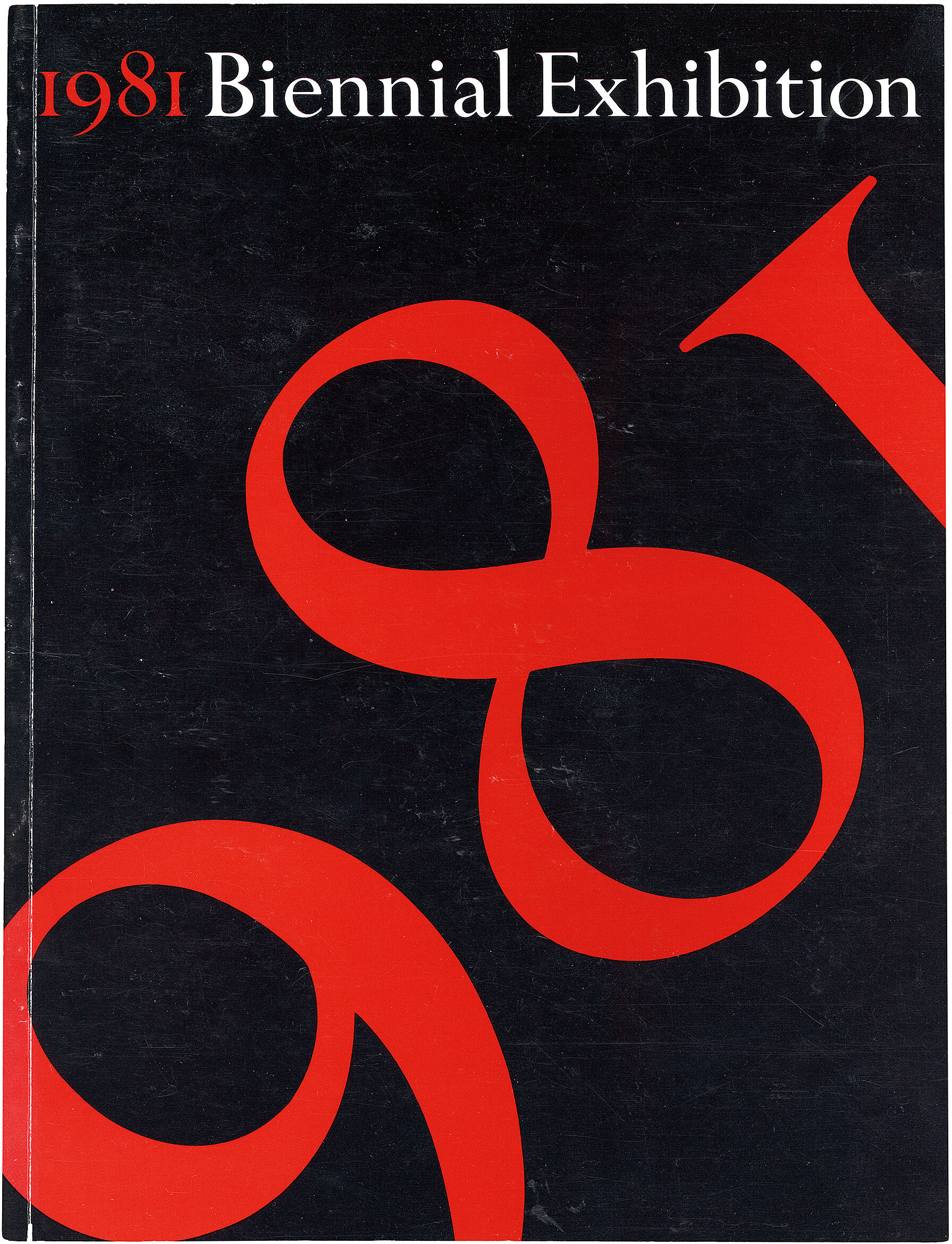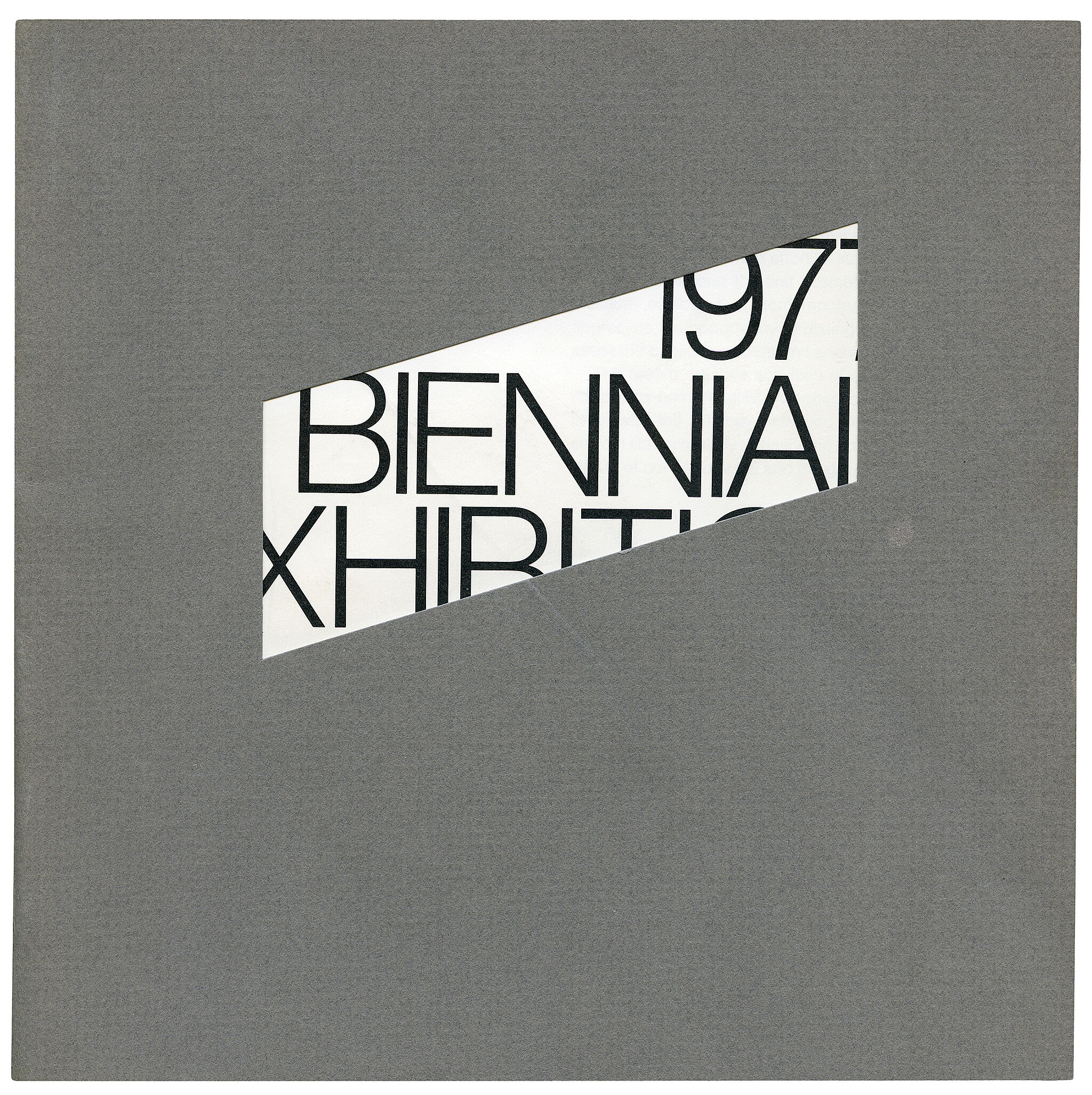Vito Acconci
1940–2017
Known for his radical experiments in performance, video, and installation, Vito Acconci began his career as a poet. A preoccupation with space—specifically, how words are contained within the page—led in 1969 to early forays in the visual arts, which he described as “ways to get myself off the page and into real space.” Setting up situations based on actions such as jumping, following people, or rubbing his own body, Acconci recorded his activities through text, photographs, and audio- or videotape.
On October 12, 1969, midway through his three-week action Following Piece, in which he followed strangers throughout New York to challenge the boundaries of private and public space, Acconci traveled a hundred miles north to Saugerties. There, in the bucolic Hudson River valley that had inspired artists since the nineteenth century, he enacted Hands Down/Side by Side. Holding a Kodak Instamatic at one hip with little regard for framing or orientation, he snapped a photo of his surroundings before switching the camera to the opposite hip for a second shot. Far from the carefully composed landscape views associated with this place, Acconci’s photographs captured off-handed impressions “not of an activity, but through an activity.” Acconci pasted the two photographs on each end of a board, flanking a spliced image of his midsection that locates the origin of the other photographs. In this layout, the artist defines the limits of his body in space, allowing it to expand “into land” as he sketches out his schematic description.
Introduction
Vito Acconci (Italian: [ˈviːto akˈkontʃi], ; January 24, 1940 – April 27, 2017) was an American performance, video and installation artist, whose diverse practice eventually included sculpture, architectural design, and landscape design. His performance and video art was characterized by "existential unease," exhibitionism, discomfort, transgression and provocation, as well as wit and audacity, and often involved crossing boundaries such as public–private, consensual–nonconsensual, and real world–art world. His work is considered to have influenced artists including Laurie Anderson, Karen Finley, Bruce Nauman, and Tracey Emin, among others.
Acconci was initially interested in radical poetry, creating 0 to 9 Magazine, but by the late 1960s he began creating Situationist-influenced performances in the street or for small audiences that explored the body and public space. Two of his most famous pieces were Following Piece (1969), in which he selected random passersby on New York City streets and followed them for as long as he was able, and Seedbed (1972), in which he claimed that he masturbated while under a temporary floor at the Sonnabend Gallery, as visitors walked above and heard him speaking.
In the late-1970s, he turned to sculpture, architecture and design, greatly increasing the scale of his work, if not his art world profile. Over the next two decades he developed public artworks and parks, airport rest areas, artificial islands and other architectural projects that frequently embraced participation, change and playfulness. Notable works of this period include: Personal Island, designed for Zwolle, the Netherlands (1994); Walkways Through the Wall at the Wisconsin Center, in Milwaukee, WI (1998); and Murinsel, for Graz, Austria (2003). Retrospectives of Acconci's work have been organized by the Stedelijk Museum in Amsterdam (1978) and the Museum of Contemporary Art, Chicago (1980), and his work is in numerous public collections, including those of the Museum of Modern Art and Whitney Museum of American Art. He has been recognized with fellowships from the National Endowment for the Arts (1976, 1980, 1983, 1993), John Simon Guggenheim Memorial Foundation (1979), and American Academy in Rome (1986). In addition to his art and design work, Acconci taught at many higher learning institutions. Acconci died on April 28, 2017, in Manhattan at age 77.
Wikidata identifier
Q433471
Information from Wikipedia, made available under the Creative Commons Attribution-ShareAlike License . Accessed December 18, 2025.
Introduction
After receiving an MFA from the University of Iowa, Acconci began his career as a poet. He began producing visual work in 1969, with photography, video, and performance. He is considered a founder of the practice of performance and video art. In the mid-1970s he began practicing as an architect and designer, working on projects for public spaces including public parks, rest areas, and buildings . A retrospective exhibit and catalog was produced by the Chicago Museum of Contemporary Art in 1980. He also taught and lectured in art schools during his career. In 1992, with the architect Steven Holl, Acconci created a facade for the Storefront for Art and Architecture; a series of panels that open onto the sidewalk in lower Manhattan.
Country of birth
United States
Roles
Artist, architect, designer, installation artist, landscape architect, performance artist, photographer, poet, sculptor, video artist
ULAN identifier
500014538
Names
Vito Acconci, Vito Hannibal Acconci, Vito Acconi
Information from the Getty Research Institute's Union List of Artist Names ® (ULAN), made available under the ODC Attribution License. Accessed December 18, 2025.


